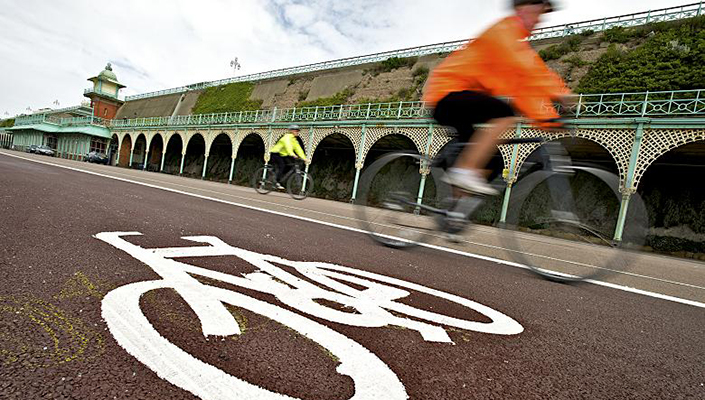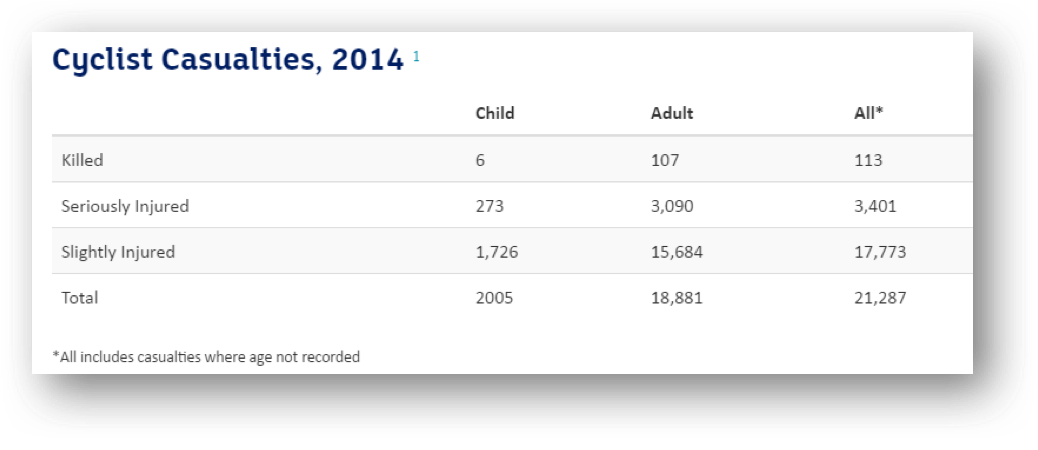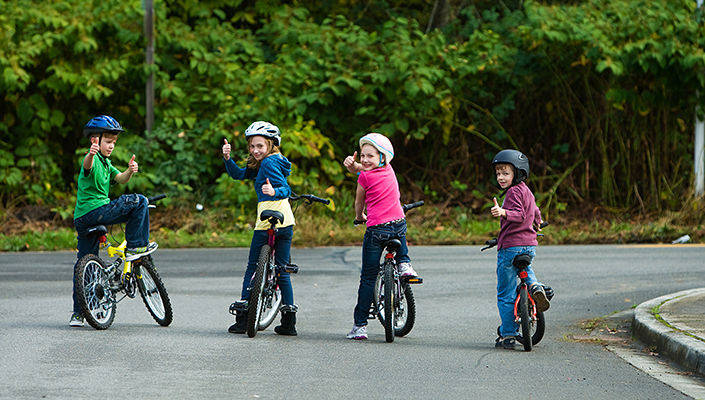Though written with beginner UK cyclists in mind, this information can easily be used for bicyclists worldwide to further understand safe cycling habits and the preventative measures we can take. This article also gives some great insight into the seriousness of cycling injuries and the statistics of safe cycling, specifically in Britain. If you keep in mind British-isms like driving on the opposite side of the road and the flagrant use of the words 'trousers' and 'cardigan', you'll find this info revealing and useful, either as a start or a reminder, regardless of your spot on the globe.
Cycling is a great way to get fit and have fun at the same time. And if you cycle to work, then a lighter pocket and shorter commute to the office could be additional benefits. The Government in England has tapped in to the growing interest in cycling and bike sharing programs, and has announced an additional investment of £100 million in 200 cycling schemes from now until 2021.
However, cycling causualties in England remain significantly high, and cycling in both urban and rural areas still poses risks to cyclists. Safety concerns are also a factor in dissuading people from taking up cycling.
Cycling fatalities: "unacceptably high"
According to statistics released by the Royal Society For The Prevention of Accidents: In 2014 "21,287 cyclists were injured in reported road accidents, including 3,514 who are killed or seriously injured" in Great Britain. With some incidents not being reported, the number of injured cyclists could actually be much higher.
The research done in Britain revealed the following insights:
- 89% of casualties were adults, and 11% children
- Almost 75% of fatal or serious accidents occur in urban areas
- 75% happen at, or near, a road junction
- Around three quarters of cyclists killed have major head injuries.
- Limb injuries are common in cyclist casualties, with over 40% suffering arm injuries and around 25% suffering leg injuries.
Common Cycling Accidents
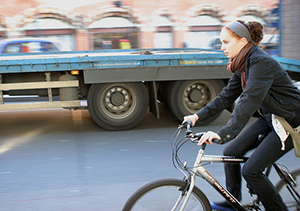
image: quickrelease.tv
According to the same report, several common situations emerged in which cycling accidents developed:
- Motorist emerging into path of cyclist
- Motorist turning across path of cyclist
- Cyclist riding into the path of a motor vehicle, often riding off a pavement
- Cyclist and motorist going straight ahead
- Cyclist turning from a major road and from a minor road
- Child cyclist playing or riding too fast
Cycling Safety: 5 Key Areas
It is important to remember that there are dangers to riding a bike, especially if you cycle on a road and in traffic. There have been a number of cases in the press of cyclists being killed or seriously injured, particularly in situations involving buses and trucks.
If you want to stay safe on your bike you need to keep the following safety tips in mind:
- 1. Check your equipment regularly
- 2. Wear the right gear
- 3. Get noticed!
- 4. Know the rules of the road
- 5. Cycling safety for kids
NOTE:
The tips in this article generally apply to countries which enforce driving on the right-hand side of the road.
1. Check Your Equipment Regularly
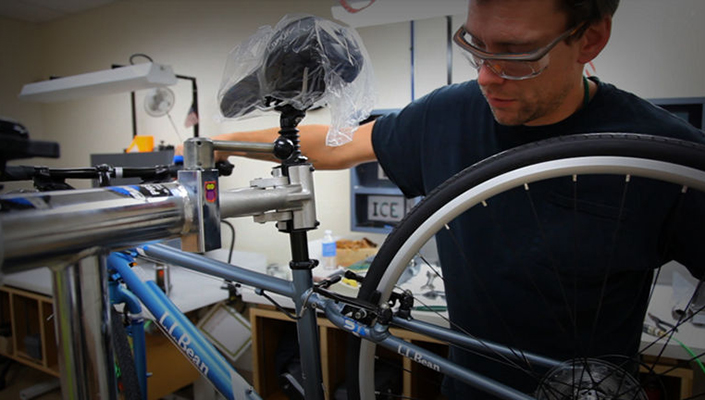
It is important to check that your bike is roadworthy before you set out on every trip. Make this a regular part of your cycling routine so that potentially dangerous mechanical failures can be avoided.
Check your bike: Take a look over the entire cycle, making sure to check the condition of metal joints, handle bars, treads, spokes, pedals, and chain.
Check the brakes: Before setting off on your trip, test the brakes at home by riding the bike around on a flat surface and checking the brakes to see if they are working.
Closely inspect your tires for any holes, tears, or worn treads: To determine whether you may have a small puncture, place your tire into a bucket of water and gently squeeze it. If there is a small hole, you will see bubbles emerge. Do not ride your bike if there is a small puncture, as the damage could worsen while you are riding, and result in a potentially dangerous situation.
Ensure the bike is at the right height: This is pretty simple to check. Just sit on the bike and make sure that the tips of your toes can reach the ground. Adjust the handlebars and the seat to the right height.
2. Wear the Right Gear
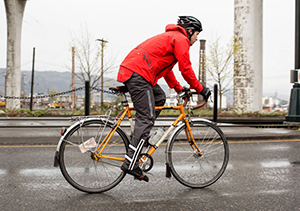
image: momentummag.com
Waterproof / windproof clothing: Always dress appropriately for the weather. Weather conditions here in the UK can change quickly, so it is best to prepare for a variety of conditions. A light rain coat will keep you dry in the rain, and a hat will improve visibility. These can be stored in a basket if your bike has one, or in a backpack. Do not be tempted to wrap a jacket or cardigan around your waist, as it can untangle and get wrapped up in your tires.
Wear the right shoes: Your shoes need to be snug and flat and they shouldn't have anything that can get caught in the wheels. Wear specially designed touring shoes which should have a small lace area and/or a Velcro strap. It is best to avoid wearing shoes with long laces, but if you do, always check that that they tightly tied together and carefully tucked in.
Buy trouser elastic or ties: Using trouser straps, elastic, or ties prevents trousers from getting stuck in the chainring or wheel spokes. It can also prevent grime and grease from the chain rubbing on to them.
Attach a rear view mirror to your cycle: A bike mirror can be attached to your handle bar or helmet to make it easier to see where other motorists are positioned.
Wear a helmet: In the UK, the Highway code recommends that cyclists wear a helmet. When choosing a helmet make sure that it conforms to current safety regulations and that it sits comfortably but firmly on your head. In some countries wearing a helmet is a legal requirement. Even if you don't need to wear one it's always a good idea to do so as it will help protect your head and brain from injury. The most common fatal accident for bike riders is head injuries.
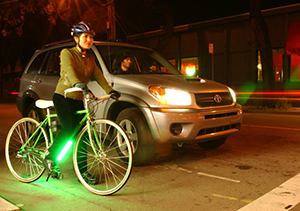
image: inhabitat.com
Take extra care at night: It is more dangerous to cycle at night, so always be careful. Travel only on well lit roads or paths with less debris or other issues such as pot holes. Travel a little slower than usual so that you have time to respond to danger. Keep in mind that you have less visibility during the night and ride carefully to compensate for that.
Protect your eyes: Your eyes are at risk from dirt, pebbles, and bugs as they can all fly into your eyes and potentially temporarily blind you. Find a good pair of goggles or bike-appropriate glasses.
Go bright!: Make sure that your clothing and shoes are a bright colour. Wearing reflective gear will also help you to stand out on the roads, especially at night.
Use lights: Your local Highway Code specifies what kind of lights should be fitted on a bike. Please see section 4 for details. If you are unsure how to fix these lights, please consult a good bike shop.
3. Following Road Rules and Using Road Sense

You should always obey the traffic rules specified in your local Highway Code. Some of the key aspects include:
Learn the rules!: It may sound obvious, but are you aware of the rules set out in the Highway Code? Sections 59-62 of the UK highway code apply specifically to cyclists. A cyclist needs to know the rules of the road to ensure that they cycle safely and do not put themselves, other cyclists, pedestrians, and motorists at risk. You should be able to interpret road markings including bus lanes, understand how roundabouts and junctions work, and give way as appropriate.
Always look behind you before turning left or right and signal clearly: Signalling is essential if you're going to turn on the road. Signal well in advance in order to indicate your intention to other road users. Before signalling check over your shoulder about 50-100 metres before the turning to determine the location of the drivers behind you. Always make sure that it is safe to signal, as you will be controlling the bike briefly with your other hand. Many cyclists do not appreciate that the bike may veer slightly off centre as they look over their shoulder, so make sure that you can turn your head quickly. This may take a bit of practice, so if you are new to cycling, try to practice this technique at home or in a quiet location.
When it is clear to do so, signal and move to the centre of your lane. Single more than once to ensure that your intentions have been clearly relayed to the motorists around you. Before turning to the left or right, make sure that you look over your shoulder again. Failing to check again is cited as one of the most common mistakes made by cyclists.
Obey traffic signals: Don't be tempted to drive through a red light or avoid stopping at a stop sign on any occasion. This is a road traffic offence, and could put your physical safety, and the safety of others, at risk.
Avoid listening to music when cycling: When cycling, it is important to listen for cars, other cyclists, and pedestrians. This is especially important in visually challenging situations such as heavy rain. So, put your mp3 players away and put your phone on silent.
Be conspicuous: Some drivers often view a cyclist as an inconvenience. Therefore to ensure that you get noticed, maintain a conspicuous and confident position in your lane. When turning left or right or continuing straight, signal your intention well in advance, and move to the centre of a lane when it is safe to do so.
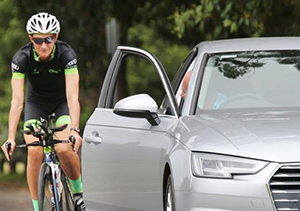
image: news.com.au
Maintain a safe width away from parked cars: To avoid being hit by an opening car door, maintain a safe door width away from parked cars. Make sure that you signal your intention to move out well in advance and look over your shoulder - at least twice - before pulling out. If the traffic behind you does not allow you to move away from a parked car, it is best to stop and move to the curb, pulling out only when it is safe to do so.
Share the road carefully: It make be legal to ride aside other cyclists, but sometimes it is best to cycle behind in single file. Avoid riding along the inside of vehicles, particularly large ones, as you may be in their blind spot and could be hit as the vehicle turns; stay safe and stay behind the vehicle.
Obey the speed limits: Even cyclists have to avoid speeding, so make sure you know, and obey, the speed limits in slow zones. These are typically the areas around schools and pedestrian crossings.
Don't cycle on a footpath or sidewalk: Unless you are a small child, cyclists should always cycle on the road, especially if there is a designated cycle lane.
Be extra careful in wet conditions: Water on the roads, whether from rain or a leaking pipe, will pose a danger to cyclists. These potentially slippery conditions could reduce the grip of the tire treads on the road and require greater breaking distance. In these conditions it is best to reduce your speed and avoid a hard stop, unless it is unavoidable. Wear rainproof clothing to keep comfortable and appropriate eye protection such as glasses designed for cyclists.
Carry identification and other essentials on you: Keep your ID or medication details on you when cycling to facilitate quick identification and administration of medication, if required. If you are planning a medium - long journey, keep a bottle of water and an energy bar in your backpack, to keep you going!
4. Get noticed!
The following steps will help prevent you from being overlooked by other drivers and cyclists on the road.
Use proper lighting fixtures on your bike as specified in the highway code of your local area: For example, the UK Highway code (Rule 60) states:
"At night your cycle MUST have white front and red rear lights lit. It MUST also be fitted with a red rear reflector (and amber pedal reflectors, if manufactured after 1/10/85). White front reflectors and spoke reflectors will also help you to be seen. Flashing lights are permitted but it is recommended that cyclists who are riding in areas without street lighting use a steady front lamp." - Law RVLR regs 13, 18 & 24.
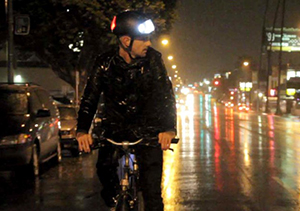
image: wired.com
At night, and in areas of low visibility, a continuous stream of light is more noticeable than a flashing one. When riding in the daytime a flashing front light still grabs more attention than no light at all. Add reflectors throughout your bike so that it is visible from all angles and to all road users including pedestrians.
Use lights on your helmet: If you're cycling when it is dark, or if the visibility is poor, consider also adding a light to your helmet in order to improve visibility and to make you more conspicuous.
Be conspicuous with your lane positioning: As mentioned earlier, use the primary position - or centre of the lane - when cycling on a narrow path or when approaching a junction. This position increases the likelihood of being seen by drivers, but make sure to single your intention to move to the centre of lane as soon as possible, and check over your shoulder twice before changing your position.
Keep a safe distance away: It is important to maintain a safe distance away from the vehicle in front of you. If you position yourself too close behind, you could fall in their blind spot and you may not be giving yourself enough time to respond to the actions of the drivers or other cyclists around you.
5. Cycling safety for kids
Use a completely safe space when teaching children to ride bikes: You should allow your child to learn at their own pace and give them plenty of encouragement. Sign up your kids for a bike clinic in your area. In the UK we have the free Bikeability program, a Government sponsored cycling training program. The course modules are designed to teach the cyclist how to safely navigate all potential situations.
Ensure your child wears a helmet:Your child should always wear a helmet when cycling, which must comply with current safety specifications. Because children's skulls are weaker than adults, an impact, even a slight one, could result in significant brain damage.
Keep skin covered: Long sleeve tops and trousers help protect skin during a fall, and elbow and knee pads provide additional cushioning from impacts.
Make sure your child understands the risks of riding at high speeds: You should discourage your children from riding too fast and warn them about the dangers of losing control, losing concentration and taking risks. Test your child's road awareness skills by walking around the local area and asking them to pick out potentially dangerous situations such as: a pedestrian stepping out suddenly on to the road, a driver opening a car door, sudden acceleration on a hill, the impact of rain on road conditions, how to react to oncoming emergency vehicles, how to safely approach junctions, etc.
Find a safe place for your children to ride: This includes finding a safe route for them to ride to-and-from school, in parks or other locations. Always map out the area for potential risks and test your child's ability to spot potentially dangerous situations. The greater the appreciation of risk, the more likely that you can react to it effectively.
Although cycling is a great sport and a fun activity to share with your friends and family, always be aware of the risks to both cyclists and drivers. Start by reading the Highway code in your local area, and join a safe cycling program like the government sponsored Bikeability program that we have here in the UK.
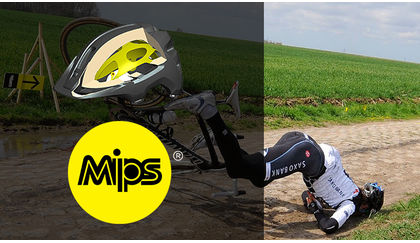
RELATED ARTICLE:
MIPS Helmets: How do they work? Should you use one?
With MIPS equipped helmets being on the market for a few years now should you be using one? BikeRoar discusses whether or MIPS is worth... READ MORE

RELATED ARTICLE:
Helping your family enjoy cycling
You love cycling but your family is on the fence?BikeRoar gives you get ideas on how to help your family enjoy...READ MORE
